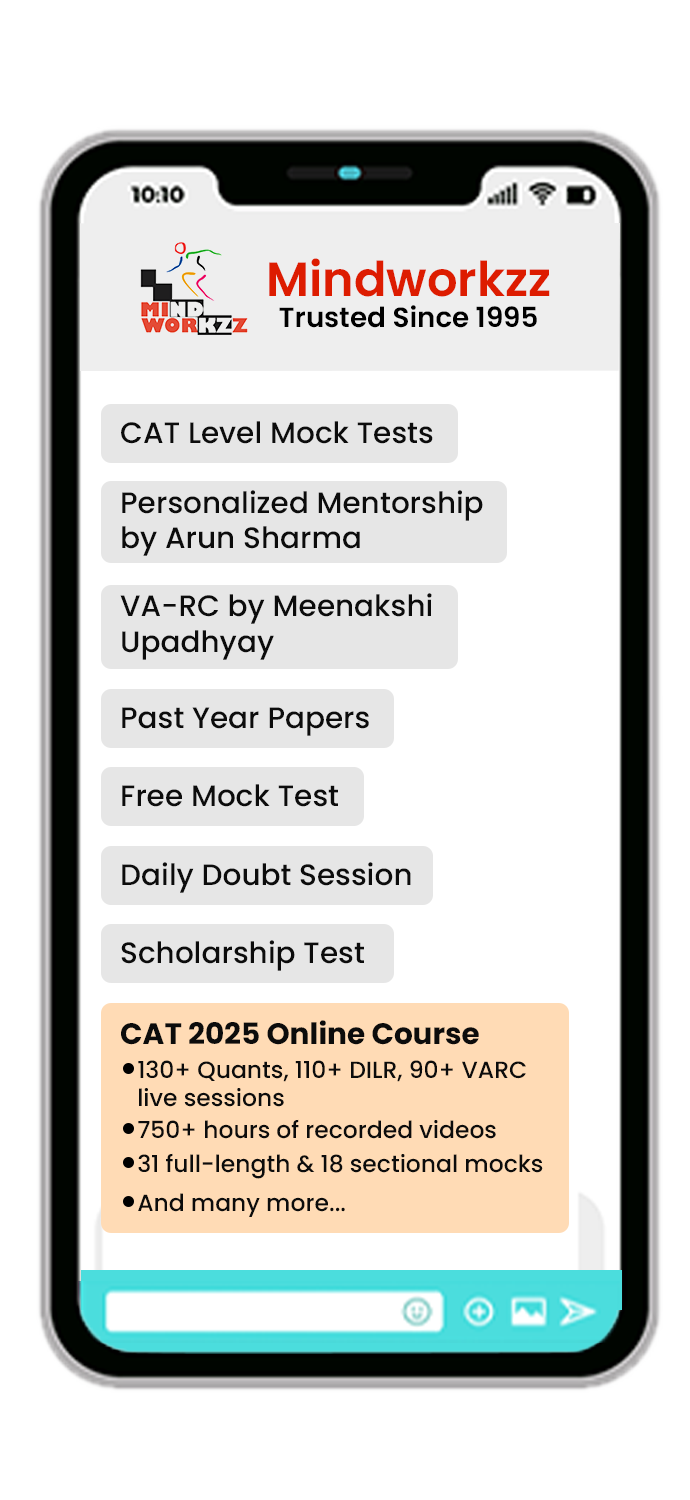Puzzle Questions - Test 1

The CAT Experience Test Series By Arun Sharma
At Just - ₹299/-
Act Fast! Unbeatable Discounts Ending Soon!
POPULAR
Our Address
AMS Learning Systems Private Limited
A 25/4, First Floor, Middle Circle, Connaught Place, New Delhi 110001. (Delhi Office)
Quoin Academy, 305, Rajdarshan SOC, Dada Patil Wadi, Behind ICICI ATM, Thane West. (Mumbai Office)
Contact Us
Email :[email protected]
CALL US : Admissions –9595806833
Helpline – 9415333920/ 8376996801
